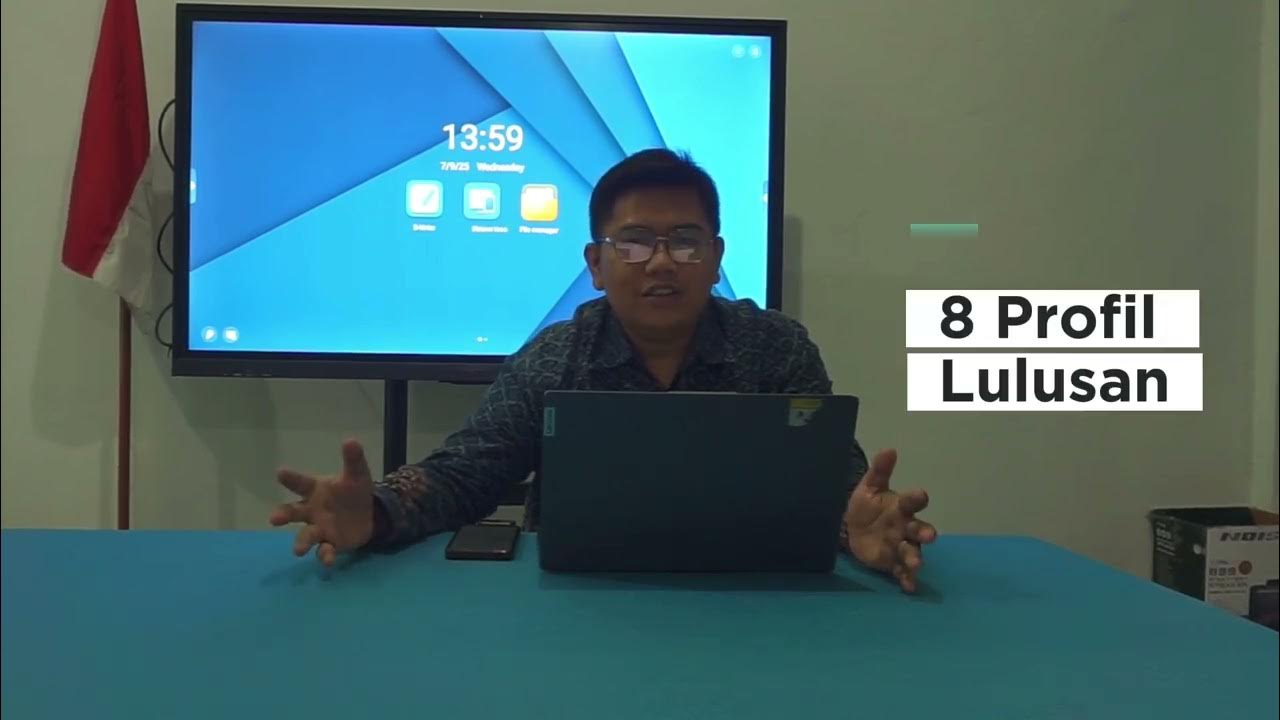ROFIL PELAJAR PANCASILA: BERNALAR KRITIS
Summary
TLDRA group of students at SMA Negeri Cerdasberkarakter faced frequent power outages, which disrupted their learning. After discussing the issue, they proposed a solution using renewable energy sources like solar power (PLTS). Despite challenges such as space limitations and weather conditions, they realized PLTS was the most viable option. With guidance from their physics teacher and support from the school, they created a proposal for a solar panel system. The proposal was approved, and the installation of the PLTS was successfully completed, providing a sustainable and educational energy source for the school.
Takeaways
- 😀 Students at SMA Negeri Cerdasberkarakter discuss frequent power outages disrupting their school life.
- 😀 Bima is frustrated by the heat from power outages, while Andi cannot use water in the toilet during outages.
- 😀 The narrator is disappointed that their computer class is often postponed due to power cuts.
- 😀 The students brainstorm solutions to the issue of frequent power outages at school.
- 😀 The idea of using solar power (PLTS) is suggested as a possible solution after a lesson on renewable energy.
- 😀 While other alternatives like wind and hydropower are considered, solar energy is identified as the most feasible for their location.
- 😀 The school’s tropical climate is ideal for solar panels, with plenty of sunlight throughout the day.
- 😀 Wind and hydroelectric power (PLTB and PLTA) are deemed less suitable due to environmental factors like lack of wind and large space requirements for dams.
- 😀 Solar panels are seen as cost-effective and long-lasting, with low maintenance and durability exceeding 20 years.
- 😀 The students create a proposal for the installation of solar panels at school with the help of their physics teacher and OSIS members.
- 😀 After presenting the proposal, the school authorities support the project, and the installation of the solar power system is successfully completed.
- 😀 The solar panel system is inaugurated, providing the school with renewable energy and serving as an educational tool for students.
Q & A
What was the main issue faced by the students at the school?
-The main issue was frequent power outages at the school, which disrupted their learning and daily activities, including difficulties with using the toilet and completing computer lessons.
Why did the students consider using a generator as a solution?
-The students considered using a generator because it could provide electricity during power outages. However, they rejected this idea due to the noise, vibration, and air pollution caused by the generators, which would disrupt the learning process.
What renewable energy solution did the students propose to solve the power outage issue?
-The students proposed using solar power through a photovoltaic power plant (PLTS) as a renewable energy solution to address the power outages at the school.
What were some concerns the students had about using solar panels?
-The students were concerned about the need for large spaces to install the solar panels, as well as the lack of sunlight during cloudy days or in the evening. However, they considered that the tropical climate with abundant sunlight could make solar panels a viable option.
Why was wind power not a suitable solution for their school?
-Wind power was not suitable for their school because the area was often hot and lacked strong winds, making it less effective compared to places with consistent wind, such as coastal regions.
What challenges did the students face when considering hydroelectric power (PLTA)?
-The students learned that hydroelectric power required significant investment and space for building dams, which made it an impractical solution for their school.
How did the students conclude that solar power (PLTS) was the most feasible solution?
-The students concluded that solar power (PLTS) was the most feasible option due to its lower construction and maintenance costs compared to other renewable energy sources. Additionally, solar panels have a long lifespan, often exceeding 20 years, and maintain efficiency over time.
What steps did the students take to make their solar power proposal a reality?
-The students discussed the proposal with their physics teacher and the student council (OSIS), and then created a proposal for the installation of solar panels. They conducted research, gathered data, and worked with the teacher to prepare the details and budget for the project.
How was the proposal received by the school administration?
-The proposal was well received by the school administration, including the principal, who shared the same goal of improving the school's energy situation and supported the installation of solar panels.
What was the outcome of the solar power project?
-The installation of the solar panels was completed successfully, and the school now benefits from renewable energy. The project was even inaugurated by the principal, marking the students' idea becoming a reality and providing a sustainable solution to the power outages.
Outlines

This section is available to paid users only. Please upgrade to access this part.
Upgrade NowMindmap

This section is available to paid users only. Please upgrade to access this part.
Upgrade NowKeywords

This section is available to paid users only. Please upgrade to access this part.
Upgrade NowHighlights

This section is available to paid users only. Please upgrade to access this part.
Upgrade NowTranscripts

This section is available to paid users only. Please upgrade to access this part.
Upgrade NowBrowse More Related Video

MPLS | SMA Negeri 4 Surabaya | Kurikulum Sekolah

Listrik Sering Padam Warga Datangi PLN Bangko

Lomba Berita Bahasa Sunda Tingkat Provinsi Jawa Barat - M Deni Maulana - SMAN 1 Cianjur

Efektivitas Pembelajaran Berdiferensiasi Menggunakan Model Flipped Classroom Terintegrasi GCR

“SARANGHAEYO JOGJA” karya FELDA NOOR SA’IDAH – SMAN 1 YOGYAKARTA (Javanese-Language Radio Drama)

Pra pembelajaran SMA NEGERI 1 LUBUK PAKAM
5.0 / 5 (0 votes)